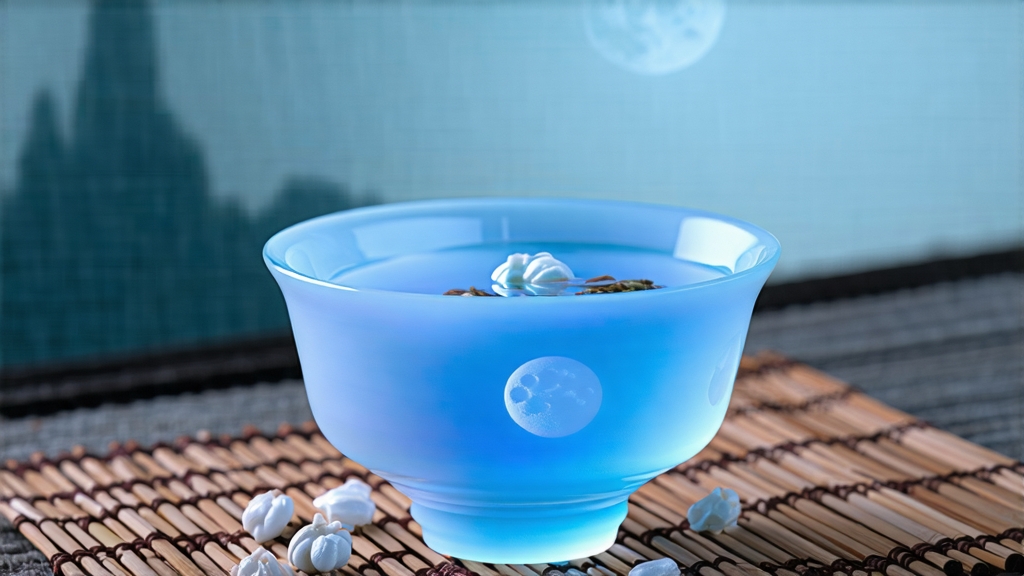
When Chinese tea lovers speak of “white tea,” they are not referring to a cup that is merely pale in color; they are invoking an entire philosophy of restraint. Among the six major families of Chinese tea, white tea is the least tempered by human hands, and within that family Bai Hao Yin Zhen—literally “White Hair Silver Needle”—stands as the most aristocratic. Composed only of unopened buds plucked for a few fleeting days each spring, Silver Needle is tea reduced to its luminous essence: aroma of mountain sage, flavor of dew on pear skin, and a finish that lingers like moonlight on still water. To understand China’s most subtle tea is to listen for whispers rather than declarations, and no cultivar whispers more seductively than Bai Hao Yin Zhen.
Historical records trace white tea to the Song dynasty (960-1279), when the imperial court in Hangzhou demanded “white” tribute teas whose buds were so downy they looked powdered. Yet the lineage of Silver Needle itself is surprisingly young. In the 1790s, tea merchants in Fuding county—on the rugged coast of Fujian—began exporting small lots of needle-shaped buds to Europe via the port of Canton. Victorian England prized them for their appearance, steeping the buds in glass teapots to watch them stand upright like a bed of miniature spears. The 1850s saw the first written mention of “Pekoe Silver Needle,” a mistranslation of “bai hao,” the white down that coats each bud. By the late Qing, Fuding growers had standardized the plucking rule: one tender bud, no leaf, no stem, picked before the Qingming festival when the spring air is still cool enough to keep the down intact. Thus a tea born of commerce became a legend of terroir.
Geography is destiny for Silver Needle. Authentic Bai Hao Yin Zhen comes only from northern Fujian: Fuding and the neighboring districts of Zhenghe and Jianyang. Here, granitic mountains rise straight from the East China Sea, trapping fog that acts as a natural shade cloth. The local cultivar, Fuding Da Bai Hao, has unusually large buds—up to 3 cm long—whose cell walls are rich in amino acids yet low in catechins, yielding sweetness without astringency. Spring mornings on the foothills of Taimu Mountain smell of azalea and sea salt; by afternoon the same air carries the faint iodine of drying kelp. These scents insinuate themselves into the buds and re-emerge months later in your cup.
Plucking begins at dawn when the dew is still cold. Experienced pickers use only the nail of the thumb and index finger to avoid bruising the bud; a single kilo of finished tea needs roughly 30,000 buds, enough to fill two large baskets carried on a farmer’s shoulders. Once back at the farmhouse, the buds are spread in a single layer on bamboo trays and left to wither. No firing, no rolling, no shaking—just air, time, and the judgment of the tea master. For the first six hours the buds lose moisture rapidly; trays are then stacked in racks where oxidation proceeds at a glacial pace. At night the farmhouse windows are cracked open so the sea breeze can slip in, lowering the ambient temperature and locking in floral notes. After 36–48 hours the buds have lost 80 % of their weight, turning from jade green to the color of antique pewter. A final gentle bake at 40 °C for twenty minutes halts enzymatic activity without caramelizing sugars, preserving the silvery down that gives the tea its name.
Because processing is minimal, every mistake is magnified. Over-withering produces a hay-like smell; under-withering leaves a grassy bite. In rainy weather farmers resort to indoor withering chambers where warm air circulates from below, yet purists claim the tea loses its “mountain charm.” The most sought-after lots are those that coincided with cool, dry days and a half-moon night—local belief holds that lunar gravitation draws moisture outward, tightening the bud. Whether science or folklore, the result is a tea whose aroma recalls fresh lychee and almond blossom.
Western drinkers often confuse Silver Needle with other white teas. Bai Mu Dan (White Peony) includes the next two leaves and steeps a darker liquor with muscatel notes. Gong Mei (Tribute Eyebrow) uses larger leaves and delivers a woody cup. Shou Mei (Longevity Ey